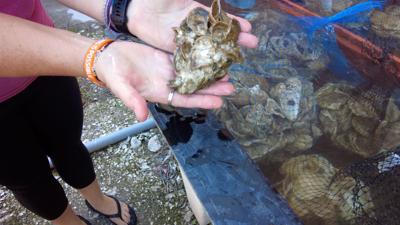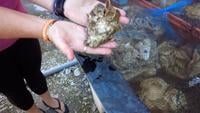MADISON, MD - In their annual 'spatfall intensity index' survey conducted by the Department of Natural Resources (DNR), the Chesapeake Bay is experiencing a remarkable surge in its baby oyster population. The findings reveal an "outstanding population" of baby oysters, known as spat, thriving beneath the surface. The DNR suggests that the high numbers of spat could be attributed to below-average rainfall, resulting in increased salinity levels—a condition conducive to the thriving of these juvenile oysters.
Particularly noteworthy is the discovery within the Tred Avon River, where the DNR describes the numbers of oyster spat as 'once in a generation.' While this bodes well for watermen, some express concerns about the implications for the future.
For reference, spat, or spat on shell, represents baby oysters that grow onto adult oysters. In 3 to 4 years, they become adults and ready for harvest. The abundance of baby oysters is seen as a positive development for watermen, offering potential economic benefits.
Ben Krewson, General Manager of Madison Bay Seafood, says, "What we're seeing this year so far is astronomical. Nobody has ever seen, in my 52 years on planet earth, a spat set like what they had this year. There were oysters that had 30 to 40 oysters attached to 'em."
The DNR utilized the spatfall intensity index to record these above-average population numbers, providing insights into the bay's bivalve population status. Secretary Josh Kurtz of DNR expresses his enthusiasm, stating, "Both the quantity and the wide distribution of spat throughout the bay, including several areas where our biologists have rarely observed spat in nearly 40 years of results, are outstanding."
However, amid the celebration, concerns arise about potential challenges ahead. Krewson predicts, "Three years from now, two and a half years from now, we're gonna have an oyster that's got 30 growing out of it." This scenario could complicate commercial watermen's harvesting efforts.
In anticipation of such challenges, there is hope that power dredging will come back into play. Power dredging would cultivate the bottom and break off adult oysters from each other, facilitating a more manageable harvesting process. As the Chesapeake Bay experiences this oyster population boom, the delicate balance between abundance and sustainability becomes a focal point for the future.



